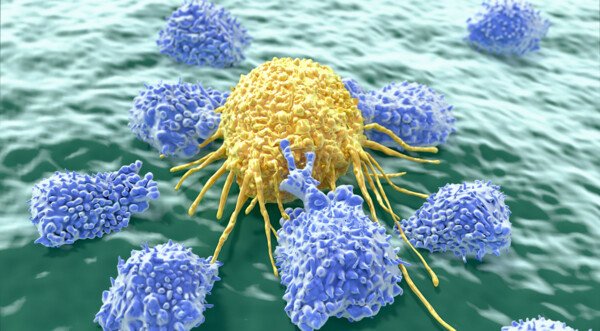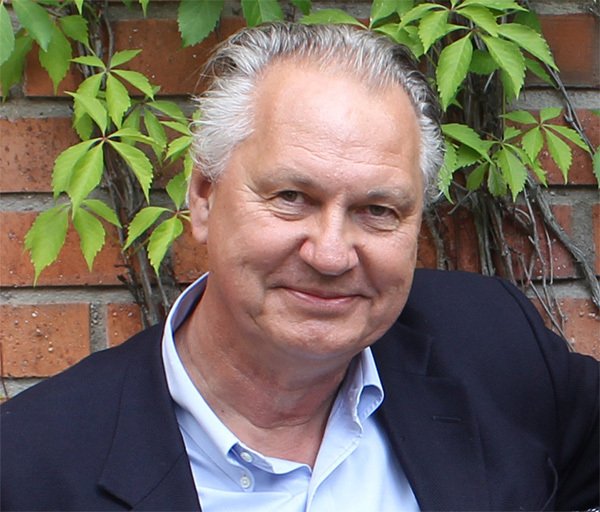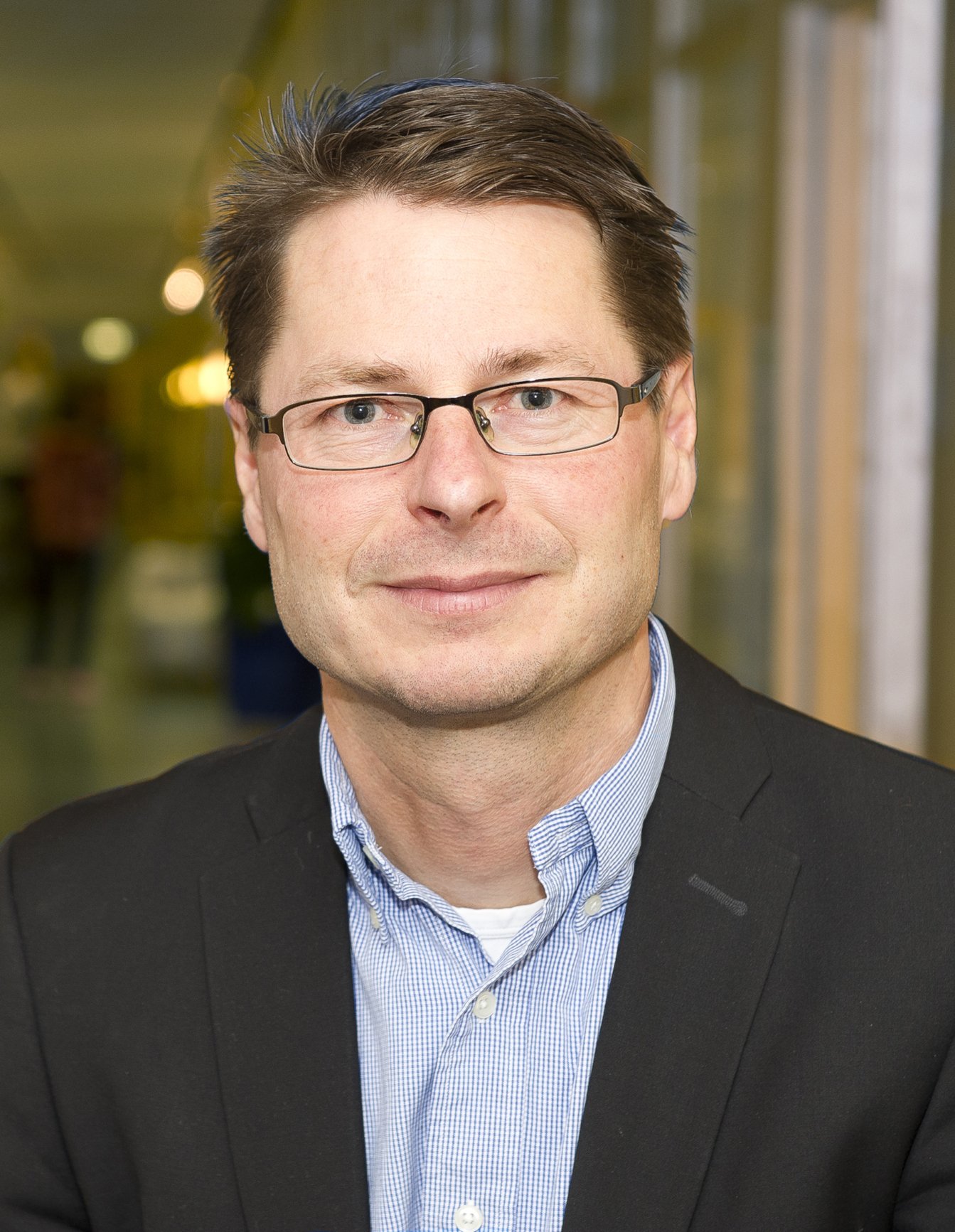Spotlight on: NK cells
Less than 40 years ago, they were considered insignificant, today natural killer cells are used in advanced cancer treatment. Karolinska Institutet has been involved in the entire journey, through controversies, criticism, and success.

Text: Mårthen Göthlin, first published in Swedish in the magazine Medicinsk Vetenskap no 2/2017 under the vignette Tidslinjen (The timeline). Minor edits of the online version in September 2023.
The 1970s | Noise. When KI researchers Rolf Kiessling, Eva Klein and Hans Wigzell investigate how T cells recognize and kill cancer cells in mice, they discover something more than just ordinary T cells. Initially in the experiments, it is dismissed as "disturbing background noise". Similar “background noise” was also observed by American researchers.
1975 | The cells are detected and named. After a few years, the same research team shows that the background noise has in fact been caused by a previously unknown immune cell, which kills cancer cells as soon as they are found. They have therefore been given the name natural killer cells or NK cells.Meanwhile, KI researcher Mikael Jondal and colleagues identify the same type of cell in humans.
1978 | Virus killers. Researchers at the Wistar Institute and Karolinska Institutet show that NK cells also recognizes virus-infected cells. This paves the way for numerous studies which show that NK cells are very important in the defence against a range of viral infections.

1981 | Questioned hypothesis. In his doctoral thesis, Klas Kärre at Karolinska Institutet presents a hypothesis to explain how NK cells distinguish between own and foreign cells:The foreign cells are attacked when lacking a cell surface protein, which normally acts as a kind of self-marker. The hypothesis is met with criticism during its public defence and is considered speculative by the opponent, but it was developed further in future publications.
1985 and 1986 | Protein hunting. One morning, Klas Kärre and doctoral student Hans-Gustaf Ljunggren discover that their lab mice, injected with cancer cells without a certain cell surface protein, MHC class 1, do not develop tumours. In the following studies, they show that it is the NK cells in the mice that kill the cancer cells that lack the membrane protein. Out of this develops a new research field centred on identifying the molecular specificity of NK cells.
1989 | It's hard to live without them. Individual cases of young patients without NK cells show that it is very difficult to survive without them. The causes of death include herpes virus infections at an early age.
1997 | Submarine-like. How NK cells work is similar to the Swedish Armed Forces' instructions on how those who live in and around the archipelago should distinguish between Swedish and foreign submarines. They, like NK cells, are asked to report only those submarines that lack the attributes of the Swedish submarines (i.e. they learn to recognise “self” and react if they detect an absence of “self”). This is the same process that the NK cells use when recognising their target cells.
2005 | Cell therapy. In a clinical trial conducted by Jeffrey Miller, five out of 19 patients with acute myeloid leukaemia are cured using donated NK cells. This is the first time NK cells have functioned effectively as immunotherapy and this leads to extensive analyses of how future NK cell therapies can be designed.
NK cells in brief
There are approximately 2 billion natural killer cells, or NK cells, that circulate constantly throughout the body. Unlike cells in the specific immune system, they can kill cancer cells and virus-infected cells immediately, without having encountered them before. They also help control how other immune cells react to intruders and help maintain balance in the immune system.
Live medicines under development
Before researchers even knew it, NK cells were part of the cells that helped in the first bone marrow transplants for leukaemia in the 1970s. The development of the next form of immunotherapy against cancer is now underway, where NK cells are modified to specifically attack patients' unique tumour cells. And progress is fast.

"There are a large number of clinical trials going on around the world," says Hans-Gustaf Ljunggren, Professor at the Department of Medicine, Huddinge.
Together with Karl-Johan Malmberg, Evren Alici and other researchers, he has been working for more than ten years to develop treatments with NK cells for patients with different forms of blood cancer.
"We are currently evaluating the first clinical studies that started five years ago. In these studies, patients with acute myeloid leukaemia and myelodysplastic syndrome have received NK cells from related donors that were activated in various ways to kill the tumour cells. The preliminary results look promising," says Hans-Gustaf Ljunggren.
Parallel collaborations are ongoing with researchers from Karolinska Institutet and several companies that have focused on growing specialized NK cells to make the treatments possible on a large scale.
"It started with 15 years of experimental research on mice, then we spent another 15 years studying NK cells in humans and developing treatments, and we will soon be there. Over the next 15 years, I hope that our research can benefit patients as well," says Hans-Gustaf Ljunggren.
Challenges of the future
Better adaptation: Researchers are able to stimulate NK cells to attack cancer cells. But in order for them to serve as medicine for different cancer variants and other diseases, researchers need to learn more about how NK cells can be adapted for different tasks.
Find your way home: Guiding activated immune cells to solid tumours in patients is difficult. If researchers could help the NK cells find their targets more easily, they could be used against more cancer variants than those in the blood.
Logistics and price: In the work to develop new types of drugs that activate NK cells against cancer, close collaborations between academia and industry are required to solve logistical issues. One issue that needs to be solved is, for example, how living cells can be used as medicines.
